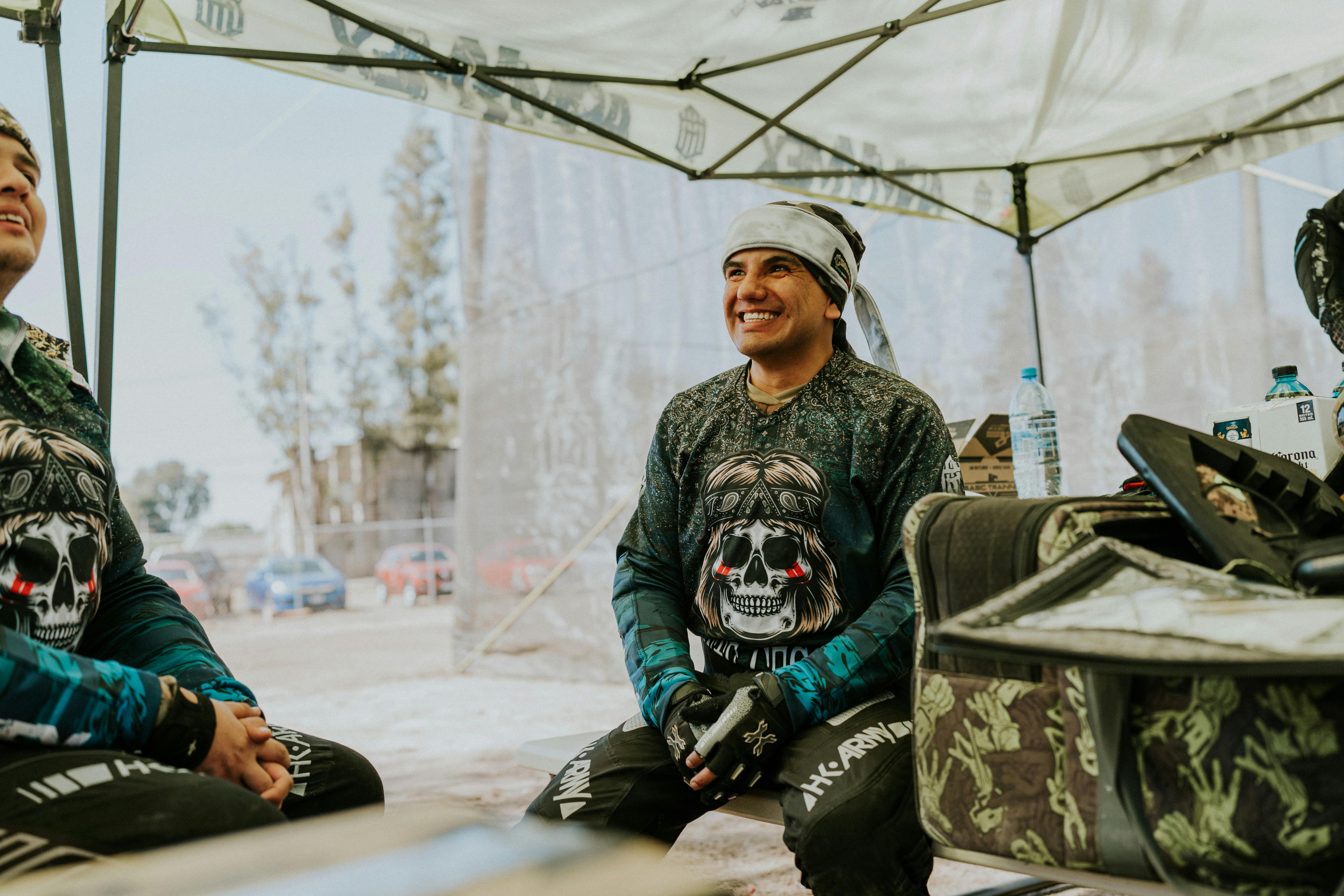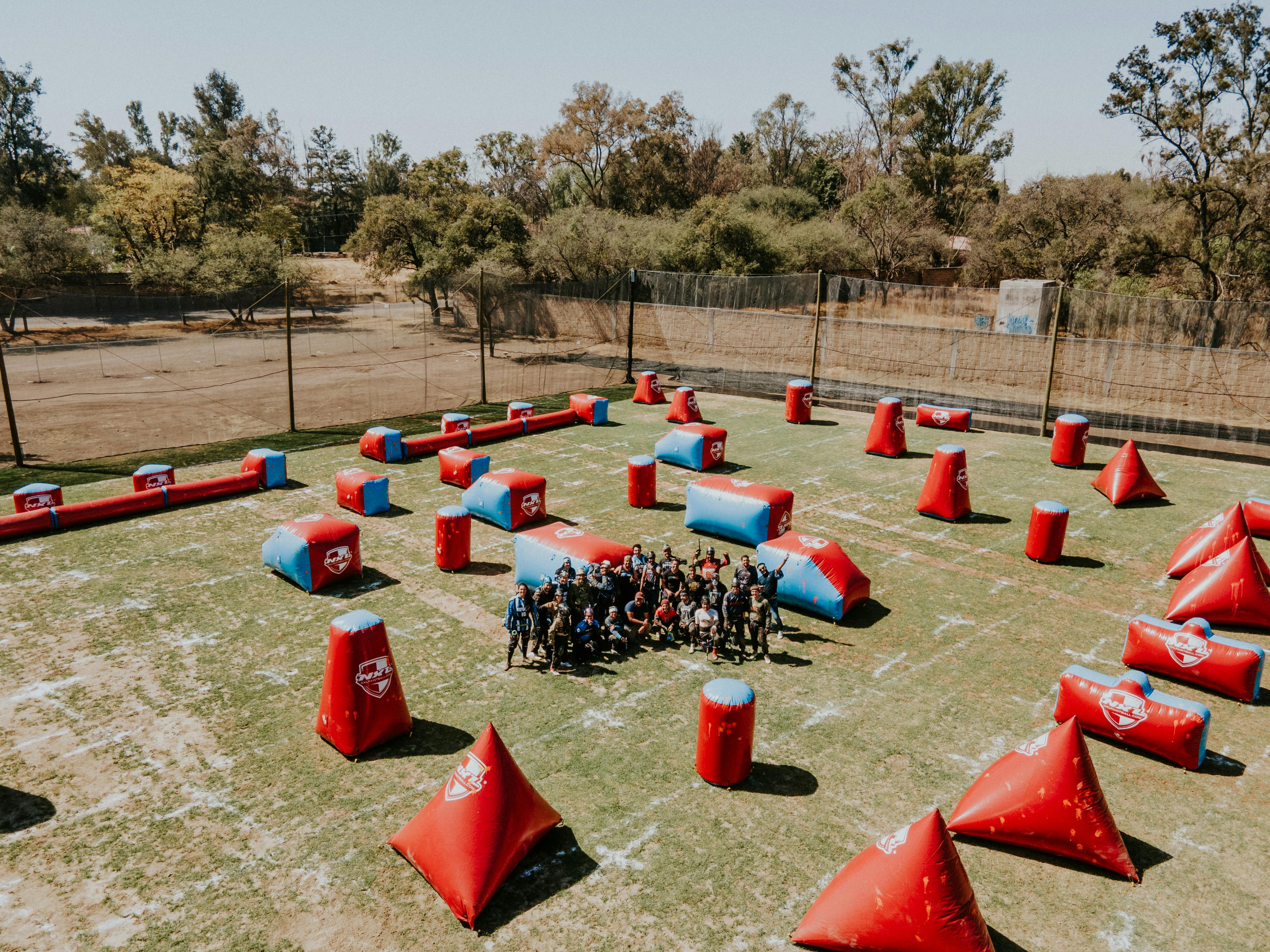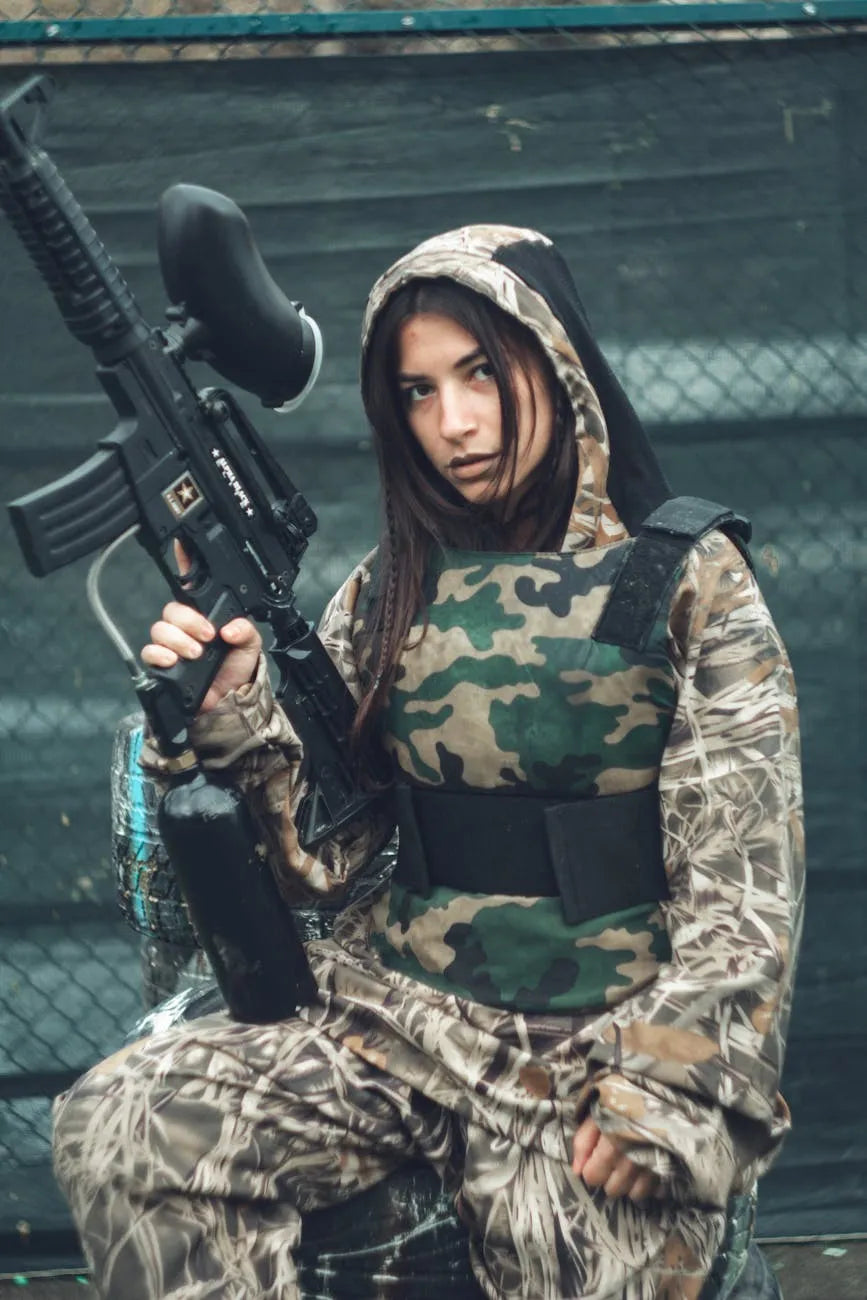Paintball vs Airsoft Which Hurts More 2025 Facts
Let's cut straight to the chase. You want to know what hurts more paintball or airsoft. Based on physics and common experience, paintball generally hurts more than airsoft. I remember my first time playing paintball as a kid. A close-range hit on my hand left a sting I recall vividly.
That initial shock almost put me off paintball for good. Later experiences showed me the strategy involved. Understanding the 'why' behind the sting makes a difference. Both sports involve projectiles. Pain perception is subjective.
Understanding the Impact Difference
The core reason paintball usually packs a bigger punch lies in the projectiles. Paintballs are significantly larger. They are also heavier than airsoft BBs. This difference matters immensely upon impact.
Here’s a quick breakdown comparing standard field limits:
| Feature | Paintball (.68 cal) | Airsoft (6mm, 0.20g BB) |
|---|---|---|
| Avg. Weight | ~3.0 grams | ~0.20 grams |
| Typical Velocity | ~280-300 FPS | ~300-400 FPS (AEG) |
| Kinetic Energy | ~12-13 Joules | ~1.1 - 1.5 Joules |
Mass: Paintballs weigh over 10 times more than typical airsoft BBs.
Energy: This mass difference results in much higher kinetic energy. Paintballs hit with roughly 8-10 times the force.
Velocity: While airsoft FPS can sometimes be higher, the low mass limits impact energy.
This table clearly shows the energy disparity. Higher energy translates directly to a harder impact. It explains why paintball hits often feel more significant. My early experiences certainly confirmed this data.
The Sensation: Thud vs Sting
Comparing the pain involves describing the feeling. Players often describe paintball hits differently than airsoft hits. It's not just about intensity. The type of sensation varies too.
Paintball: Often described as a hard "thud" or "slap". The impact feels spread over a larger area. It can leave substantial welts and bruises.
Airsoft: Typically feels like a sharp "sting" or "snap". The impact is more concentrated, like a bee sting. It usually leaves smaller red marks.
I've collected my share of paintball welts over the years. They bloom into impressive bruises sometimes. Airsoft hits, while sharp, rarely left the same lasting marks on me. Though a close-range shot on bare skin can certainly break the skin.
Remember adrenaline plays a huge role. During intense moments, you might barely register a hit. Later, you might discover the bruise or welt. Both sports demand respect for safety rules.

How Marks and Injuries Compare
Beyond the immediate feeling, consider the aftermath. What kind of marks do these sports leave? The potential for injury differs slightly. Both are safe when rules are followed.
Paintball Marks
Paintball hits distribute energy over the .68 caliber surface. This often results in:
Large Welts: Circular, raised areas are common.
Significant Bruising: The impact energy readily causes bruises. These can be quite colorful.
Potential Skin Breaks: Close range hits, especially on thin skin, can break the surface. This is less common with proper distance.
Paint Splatter: Obviously unique to paintball. It's messy but harmless.
I recall a tournament match where I took multiple hits rapidly. The resulting constellation of bruises was impressive. It served as a visual reminder of the impact energy. Proper padding helps mitigate this significantly.
Airsoft Marks
Airsoft BBs are small and light. Their impact is more focused. Typical marks include:
Small Red Marks: Often resembling bug bites. These usually fade quickly.
Minor Welts: Less pronounced than paintball welts.
Possible Skin Breaks: Higher FPS guns at close range (violating MED) can cause pinprick bleeding. This is more likely on bare skin.
Many players compare airsoft stings to a rubber band snap. While generally less intense, a high-speed BB hitting bare skin surprises you. Especially in sensitive areas like the neck or hands. Always wear appropriate protection.

Minimizing the Ouch Factor
Worried about the pain? Both paintball and airsoft can be enjoyed comfortably. Taking precautions makes a massive difference. You can significantly reduce the sting and impact. Focus on gear and smart play.
Protective Gear is Non-Negotiable
Proper safety equipment is paramount. It's not just about rules; it's about your well-being. Never compromise on eye and face protection. It's the most critical piece of gear you'll wear.
Mandatory Masks: Full face masks are essential. Paintball masks meet ASTM standards. Airsoft requires ANSI Z87.1 rated eye protection. Full seal goggles and lower face protection are recommended.
Optional Padding: Vests, padded shirts, and pants absorb impact energy. They dramatically reduce felt pain. Gloves protect sensitive knuckles. Neck protectors guard a vulnerable area.
I learned early on that quality gear enhances enjoyment. Good padding doesn't just reduce pain. It boosts confidence. You play more assertively knowing you have protection. Think of it as essential performance equipment.
Dress for Success (and Less Pain)
Your clothing choices matter. Loose-fitting, thick layers work wonders. They create space and material to absorb impact. Don't show up in just a t-shirt.
Layers: Multiple thin layers can be effective. They trap air and dissipate energy.
Thick Fabrics: Sweatshirts, hoodies, or jerseys add padding. Jeans or durable tactical pants protect legs.
Coverage: Minimize exposed skin. Long sleeves and pants are standard recommendations.
Remember my first bad experience? I wore minimal protection. A simple long-sleeved shirt would have helped. Layering appropriately is a simple, effective strategy. It makes a noticeable difference in felt impact.
Play Smart: Distance is Your Friend
Tactics aren't just for winning. They're crucial for managing pain. How you move and position yourself matters. Avoid situations where you're likely to take close-range hits.
Maintain Distance: Projectiles lose energy rapidly over distance. A hit from afar stings much less. Respect Minimum Engagement Distances (MEDs).
Use Cover: Stay behind bunkers and obstacles. Limit your exposure. Move deliberately between cover points.
Awareness: Know where opponents are. Avoid blindly rushing corners. Good situational awareness prevents painful surprises.
Field rules often include MEDs for a reason. Usually 10-20 feet for paintball. Airsoft MEDs vary based on weapon velocity. Higher FPS guns require longer engagement distances. Adhering to these rules keeps everyone safer.
Factors Influencing Pain Levels
The "what hurts more paintball or airsoft" question isn't always simple. Several factors influence the pain of any given hit. It's not just the projectile type. Consider these variables. They explain why some hits feel worse than others.
Distance and Velocity
These are the two most significant physical factors. They directly determine impact energy. Understanding them helps manage expectations. It also reinforces safe play.
Range: The further a projectile travels, the more energy it loses. A point-blank shot hurts vastly more than a long-range tag. Always maximize distance when possible.
Velocity (FPS/Joules): Higher speed equals more energy. Fields regulate maximum velocity for safety. Typical paintball limits are around 280-300 FPS (~12-13 Joules). Airsoft varies (e.g., 350 FPS/1.1J CQB, 400 FPS/1.5J outdoor). Higher limits exist for specific roles (snipers) but require longer MEDs.
Respecting field velocity limits is crucial. Chronographing markers and guns ensures fair and safe play. Never tamper with equipment to exceed limits. It compromises safety for everyone involved.
Location, Location, Location
Where you get hit matters immensely. Some body parts are far more sensitive. Getting tagged on gear feels very different from bare skin. Anatomy plays a key role.
Bare Skin: Always hurts more than hitting clothing or gear.
Bony Areas: Knuckles, elbows, collarbones, ribs lack padding. Hits here sting significantly.
Sensitive Zones: The neck, back of the head (if exposed), groin, and hands feel impacts more acutely. Aiming for the center mass (torso) is generally preferred.
Gear Hits: Shots impacting masks, vests, or packs are often just heard, not felt.
I took a shot directly on my knuckle once. Even through a thin glove, the pain was sharp and immediate. Conversely, hits on my padded vest were often barely noticeable. Aiming carefully and wearing protection makes encounters less painful.
Gear and Clothing Layers
We touched on this earlier, but it bears repeating. What you wear directly impacts felt pain. It acts as armor, absorbing and spreading the force. Protective gear is your first line of defense.
Padding: Vests, elbow/knee pads, and padded clothing directly absorb impact.
Loose Clothing: Creates space, slowing the projectile before it hits skin.
Multiple Layers: Each layer helps dissipate energy. Even thin layers contribute.
Mask/Goggles: Essential for safety. Also prevents extremely painful face/eye hits.
My journey into competitive paintball coincided with upgrading my gear. Better padding didn't just reduce welts. It allowed me to focus entirely on strategy. Knowing I was well-protected removed the fear factor. It became part of my essential equipment.
The Importance of Clear Vision
One factor often overlooked in pain management is visibility. If you can't see clearly, you can't react effectively. You're more likely to be caught off guard. You might stumble into close-range encounters unintentionally. Poor vision leads to poor decisions, which can lead to painful hits.
Situational Awareness: Clear vision allows you to track opponents. You can anticipate movements. You can maintain safe distances.
Target Identification: Ensures you engage valid targets. Prevents accidental friendly fire. Helps you spot hidden threats sooner.
Navigating Terrain: Seeing obstacles clearly prevents trips and falls. It allows smoother movement between cover. Poor vision makes movement hesitant and risky.
I learned this lesson the hard way. My astigmatism always presented challenges. Wearing bulky glasses under goggles was problematic. Fogging was a constant battle, especially in humid conditions or rain.
There was one particularly rough tournament match in Austin. Intense humidity and rain fogged my glasses completely. I was effectively blind, relying on sound and blurry shapes. Trying to support a teammate, I misjudged lanes due to distorted vision. I moved directly into an opponent's line of fire. The close-range hits were jarring, especially one to the neck. That "Blind Ace" incident, as it became known online, was humiliating. More importantly, it highlighted a critical vulnerability. Poor vision directly contributed to a painful, game-losing mistake.
That experience became a catalyst. I knew I needed a better solution than glasses under goggles. Standard anti-fog treatments weren't enough in demanding conditions. Contact lenses weren't ideal either; they often made my eyes feel dry and irritated during long games, especially outdoors with wind and dust. Plus, the risk of losing a contact mid-game was always there. Wearing glasses inside goggles also carries risks. A hard impact could potentially break the glasses, endangering my eyes. The constant fogging was the biggest issue, obscuring crucial details when I needed them most.
Soon after, a fellow player introduced me to Overo Prescription Goggle Inserts. Skeptical but desperate, I gave them a try. The difference was immediate and revolutionary. The custom-made prescription lenses provided perfect clarity. The anti-fog coating genuinely worked, even in tough weather. They fit securely within my favorite goggles, eliminating the pressure points and instability of wearing glasses underneath.
Suddenly, I could see everything. Opponents' movements, subtle details in cover, the trajectory of paintballs – it was all crystal clear. My confidence soared. I could focus entirely on the game, not on battling my eyewear. Overo didn't just solve my fogging problem; it enhanced my performance and safety. No more guessing, no more hesitant movements. Just clear, reliable vision.
The Overo inserts use a tough, durable PC frame material. It holds up in various temperatures. The CR39 lenses offer UV resistance and blue light blocking, crucial for outdoor play. What really impressed me was the adjustable frame height. Unlike some other brands like Youzee or Sportrx inserts which have fixed heights, Overo’s design allows fine-tuning the fit. This adaptability ensures perfect alignment within different goggle models and for various face shapes. It guarantees optimal field of view without compromise. This feature alone offers superior comfort and compatibility compared to competitors. Youzee also tends to be more expensive, starting at $165 compared to Overo's $119.99 price point, and offers fewer lens choices. Sportrx's purchasing process can feel cumbersome.
Here’s why Overo stands out:
Superior Compatibility: Fits major goggle brands (Oakley, Smith, Giro etc.). Wide prescription range accommodated. Adjustable height ensures optimal fit.
All-Weather Clarity: Advanced anti-fog coating resists fogging even in humidity or cold. Maintain focus on the game.
Stable Fit: Innovative structure ensures inserts stay put during intense action. Far more comfortable than glasses under goggles.
Customized Optics: Lenses precisely crafted to your prescription. Clear vision tailored for you.
Safety Assured: Meets rigorous sports equipment safety certifications. Play with confidence.
Many users echo my positive experience. One player mentioned, "Outstanding service and a fair price. Now I can see clearly..." Another shared, "My boyfriend and I are both very satisfied...No fogging issues..." A high-prescription user noted, "...excellent product...service is fantastic...price is very reasonable." Someone who dislikes contacts said, "Great product and service! ...perfectly meets my needs." The adjustable fit is also a recurring praise point: "...lenses in this one are bigger and can be adjusted up and down, which makes it way more comfortable..."
Investing in clear, reliable vision is investing in your safety and performance. It helps you avoid those painful hits that result from poor visibility. Overo provides that essential clarity. It truly redefines sports vision for prescription wearers. It allowed me to move past the "Blind Ace" incident and play at my best.

Subjectivity and Final Thoughts
So, what hurts more paintball or airsoft? Statistically, paintball delivers more energy per hit. Most players agree it generally hurts more. Yet, pain is incredibly subjective. Your individual tolerance matters. Adrenaline levels during gameplay play a huge role.
Paintball: Higher impact energy, larger welts, more bruising potential. Generally considered more painful per shot.
Airsoft: Lower impact energy, sharper sting, smaller marks. Close range or high FPS hits can be surprisingly painful, especially on bare skin.
Ultimately, both sports are thrilling experiences. Don't let the fear of pain deter you. With proper gear, smart play, and respect for safety rules, both are very safe. The sting is temporary; the memories last. My journey started with a painful hit. It evolved into a deep passion for the strategy and camaraderie.
Choose the sport that appeals most to you. Try renting equipment first. See how it feels. Focus on safety, especially clear vision. Ensure your gear, including eyewear, allows you to perform confidently. Whether paintball or airsoft, the goal is to have fun and play safe. Enjoy the game!
Frequently Asked Questions
Does paintball hurt more than airsoft?
Yes, generally paintball hurts more than airsoft due to its larger, heavier projectiles and higher kinetic energy upon impact. Paintball hits often leave welts and bruises, whereas airsoft leaves smaller red marks or minor welts.
What kind of protective gear should I wear for paintball and airsoft?
For both sports, full-face masks and goggles are essential for eye and facial protection. Padded clothing, gloves, vests, neck protectors, and durable fabrics are also recommended to minimize the impact and prevent injuries.
What’s the difference between paintball and airsoft hits?
Paintball hits feel like a heavy "thud" or "slap" and can leave substantial bruises. Airsoft hits feel like a sharp "sting" that's more concentrated, similar to a snap from a rubber band.
How can I reduce the pain while playing?
Wearing proper protective gear, layering thick or loose-fitting clothing, and respecting distances are crucial. Avoid close-range engagements and make use of cover to minimize direct hits.
Does adrenaline affect pain perception during gameplay?
Absolutely. Adrenaline can mask immediate pain during gameplay, which is why you may notice bruises or welts only after the game is over.
Can close-range hits from airsoft or paintball break the skin?
Yes, close-range hits, especially those violating safety distance rules, can break the skin in both paintball and airsoft. Proper protective gear and adherence to field rules help prevent such injuries.
Why is clear vision important in paintball and airsoft?
Clear vision ensures better situational awareness, helps prevent accidental close-range hits, and reduces hesitation when navigating. Prescription inserts like Overo can provide excellent clarity for players who need corrective lenses.



Share:
What Is a Paintball Gun 5 Key Facts for 2025
How Old To Play Paintball Minimum Age Guide 2025